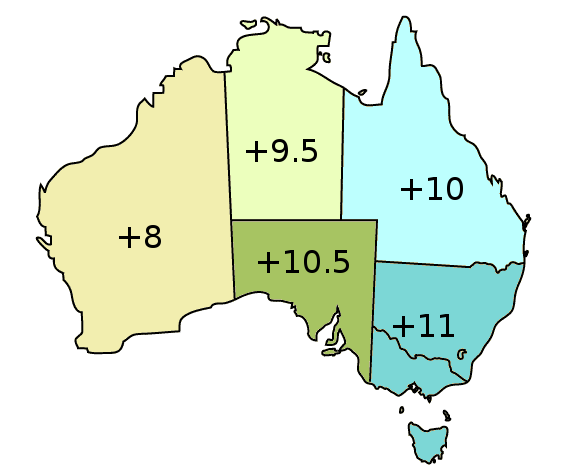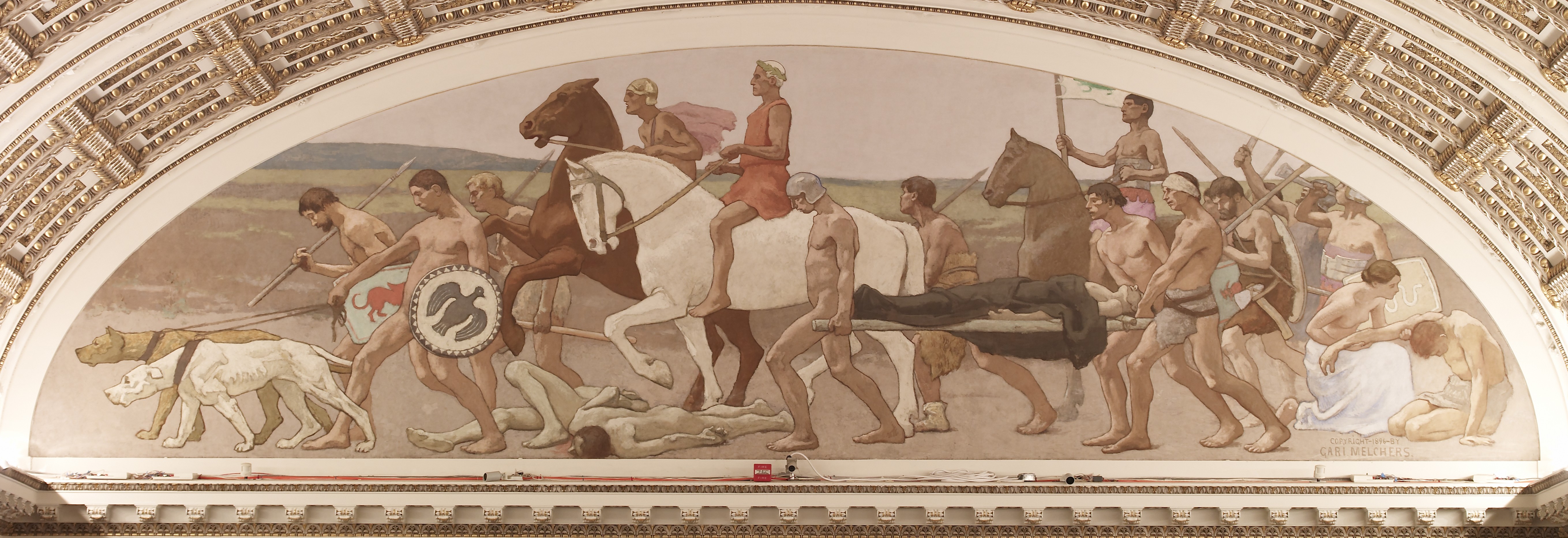|
Finch Hatton, Queensland
Finch Hatton is a rural town and locality in the Mackay Region, Queensland, Australia. In the , the locality of Finch Hatton had a population of 499 people. Geography Finch Hatton lies in the valley of Cattle Creek (a tributary of the Pioneer River) which flows from west to east through the locality. Although the centre of the locality beside the creek is at 100 metres above sea level, the northern and southern parts of the locality are mountainous rising to 970 metres in the north and 870 metres in the south. The valley contains the town, roughly centre of the locality. The Mackay–Eungella Road passes through the valley and the town from west to east, although it is called Anzac Parade within the town. History The town is believed to be named after Harold Heneage Finch-Hatton (1856-1904), a grazier of Mount Spencer run (1881–83), and imperial federationist in United Kingdom (1884-1904). He gave an account of his experiences in the area through his book entitled Advanc ... [...More Info...] [...Related Items...] OR: [Wikipedia] [Google] [Baidu] |
AEST
Australia uses three main time zones: Australian Western Standard Time (AWST; UTC+08:00), Australian Central Standard Time (ACST; UTC+09:30), and Australian Eastern Standard Time (AEST; UTC+10:00). Time is regulated by the individual state governments, some of which observe daylight saving time (DST). Australia's external territories observe different time zones. Standard time was introduced in the 1890s when all of the Australian colonies adopted it. Before the switch to standard time zones, each local city or town was free to determine its local time, called local mean time. Now, Western Australia uses Western Standard Time; South Australia and the Northern Territory use Central Standard Time; while New South Wales, Queensland, Tasmania, Victoria, Jervis Bay Territory, and the Australian Capital Territory use Eastern Standard Time. Daylight saving time (+1 hour) is used in jurisdictions in the south and south-east: South Australia, New South Wales, Victoria, Tasm ... [...More Info...] [...Related Items...] OR: [Wikipedia] [Google] [Baidu] |
Mackay–Eungella Road
Mackay–Eungella Road is a continuous road route in the Mackay region of Queensland, Australia. The entire route is signed as State Route 64. It is a state-controlled regional road (number 532). At the western end it becomes Eungella Dam Road. Route description The road commences at an intersection with the Peak Downs Highway (State Route 70) in Alexandra. It runs north-west and then west, following the Pioneer River through to , passing the Pleystowe Sugar Mill. The land beside the road is primarily used to grow sugar cane. It continues west and south-west through more canefields, following the river to , where it passes exits to Marian–Hampden Road and Marian–Eton Road, both part of State Route 5, and another sugar mill. It then runs south-west through more cane fields, following the river to . From there it proceeds generally west, following Cattle Creek and passing through the locality of and the villages of and before reaching the locality of at the foot o ... [...More Info...] [...Related Items...] OR: [Wikipedia] [Google] [Baidu] |
Heritage-listed
This list is of heritage registers, inventories of cultural properties, natural and man-made, tangible and intangible, movable and immovable, that are deemed to be of sufficient heritage value to be separately identified and recorded. In many instances the pages linked below have as their primary focus the registered assets rather than the registers themselves. Where a particular article or set of articles on a foreign-language Wikipedia provides fuller coverage, a link is provided. International *World Heritage Sites (see Lists of World Heritage Sites) – UNESCO, advised by the International Council on Monuments and Sites * Representative list of the Intangible Cultural Heritage of Humanity (UNESCO) * Memory of the World Programme (UNESCO) * Globally Important Agricultural Heritage Systems (GIAHS) – Food and Agriculture Organization * UNESCO Biosphere Reserve * European Heritage Label (EHL) are European sites which are considered milestones in the creation of Europe. ... [...More Info...] [...Related Items...] OR: [Wikipedia] [Google] [Baidu] |
Finch Hatton Railway Station, 2016
The true finches are small to medium-sized passerine birds in the family Fringillidae. Finches have stout conical bills adapted for eating seeds and nuts and often have colourful plumage. They occupy a great range of habitats where they are usually resident and do not migrate. They have a worldwide distribution except for Australia and the polar regions. The family Fringillidae contains more than two hundred species divided into fifty genera. It includes species known as siskins, canaries, redpolls, serins, grosbeaks and euphonias. Many birds in other families are also commonly called "finches". These groups include the estrildid finches (Estrildidae) of the Old World tropics and Australia; some members of the Old World bunting family (Emberizidae) and the New World sparrow family (Passerellidae); and the Darwin's finches of the Galapagos islands, now considered members of the tanager family (Thraupidae).Newton (1973), Clement ''et al.'' (1993) Finches and canaries were us ... [...More Info...] [...Related Items...] OR: [Wikipedia] [Google] [Baidu] |
World War II
World War II or the Second World War, often abbreviated as WWII or WW2, was a world war that lasted from 1939 to 1945. It involved the World War II by country, vast majority of the world's countries—including all of the great powers—forming two opposing military alliances: the Allies of World War II, Allies and the Axis powers. World War II was a total war that directly involved more than 100 million Military personnel, personnel from more than 30 countries. The major participants in the war threw their entire economic, industrial, and scientific capabilities behind the war effort, blurring the distinction between civilian and military resources. Air warfare of World War II, Aircraft played a major role in the conflict, enabling the strategic bombing of population centres and deploying the Atomic bombings of Hiroshima and Nagasaki, only two nuclear weapons ever used in war. World War II was by far the List of wars by death toll, deadliest conflict in hu ... [...More Info...] [...Related Items...] OR: [Wikipedia] [Google] [Baidu] |
World War I
World War I (28 July 1914 11 November 1918), often abbreviated as WWI, was List of wars and anthropogenic disasters by death toll, one of the deadliest global conflicts in history. Belligerents included much of Europe, the Russian Empire, the United States, and the Ottoman Empire, with fighting occurring throughout Europe, the Middle East, Africa, the Pacific Ocean, Pacific, and parts of Asia. An estimated 9 million soldiers were killed in combat, plus another 23 million wounded, while 5 million civilians died as a result of military action, hunger, and disease. Millions more died in Genocides in history (World War I through World War II), genocides within the Ottoman Empire and in the Spanish flu, 1918 influenza pandemic, which was exacerbated by the movement of combatants during the war. Prior to 1914, the European great powers were divided between the Triple Entente (comprising French Third Republic, France, Russia, and British Empire, Britain) and the Triple A ... [...More Info...] [...Related Items...] OR: [Wikipedia] [Google] [Baidu] |
Finch Hatton War Memorial
Finch Hatton War Memorial is a heritage-listed memorial at Anzac Parade, Finch Hatton, Mackay Region, Queensland, Australia. It was designed by Melrose & Fenwick and built in 1921 by Melrose & Fenwick. It was added to the Queensland Heritage Register on 21 October 1992. History The Finch Hatton War Memorial was erected on 19 November 1921, and it is possible that it may never have been officially unveiled. It was erected at a cost of which was paid for by public subscription. The stone memorial was designed and produced by Melrose and Fenwick of Mackay and honours the 16 local men who fell in the First World War. Later additions honour the 7 who fell in the Second World War. The erection of the memorial was made possible through the combined efforts of two towns, Finch Hatton and Netherdale. The initial development of Finch Hatton was in the mid 1900s as the terminus of the Pioneer Valley railway line. The town further developed when the Cattle Creek sugar mill opened in ... [...More Info...] [...Related Items...] OR: [Wikipedia] [Google] [Baidu] |
Receiving Office
A post office is a public facility and a retailer that provides mail services, such as accepting letters and parcels, providing post office boxes, and selling postage stamps, packaging, and stationery. Post offices may offer additional services, which vary by country. These include providing and accepting government forms (such as passport applications), and processing government services and fees (such as road tax, postal savings, or bank fees). The chief administrator of a post office is called a postmaster. Before the advent of postal codes and the post office, postal systems would route items to a specific post office for receipt or delivery. During the 19th century in the United States, this often led to smaller communities being renamed after their post offices, particularly after the United States Post Office Department, Post Office Department began to require that post office names not be duplicated within a list of U.S. states, state. Name The term "post-office" ... [...More Info...] [...Related Items...] OR: [Wikipedia] [Google] [Baidu] |
War Memoral, Finch Hatton, 2016
War is an intense armed conflict between states, governments, societies, or paramilitary groups such as mercenaries, insurgents, and militias. It is generally characterized by extreme violence, destruction, and mortality, using regular or irregular military forces. Warfare refers to the common activities and characteristics of types of war, or of wars in general. Total war is warfare that is not restricted to purely legitimate military targets, and can result in massive civilian or other non-combatant suffering and casualties. While some war studies scholars consider war a universal and ancestral aspect of human nature, others argue it is a result of specific socio-cultural, economic or ecological circumstances. Etymology The English word ''war'' derives from the 11th-century Old English words ''wyrre'' and ''werre'', from Old French ''werre'' (also ''guerre'' as in modern French), in turn from the Frankish *''werra'', ultimately deriving from the Proto-Germanic *''w ... [...More Info...] [...Related Items...] OR: [Wikipedia] [Google] [Baidu] |




